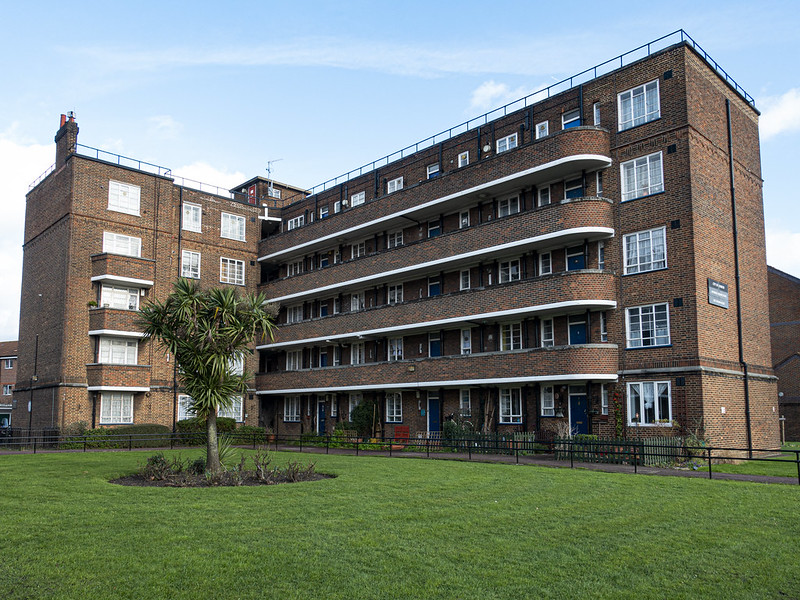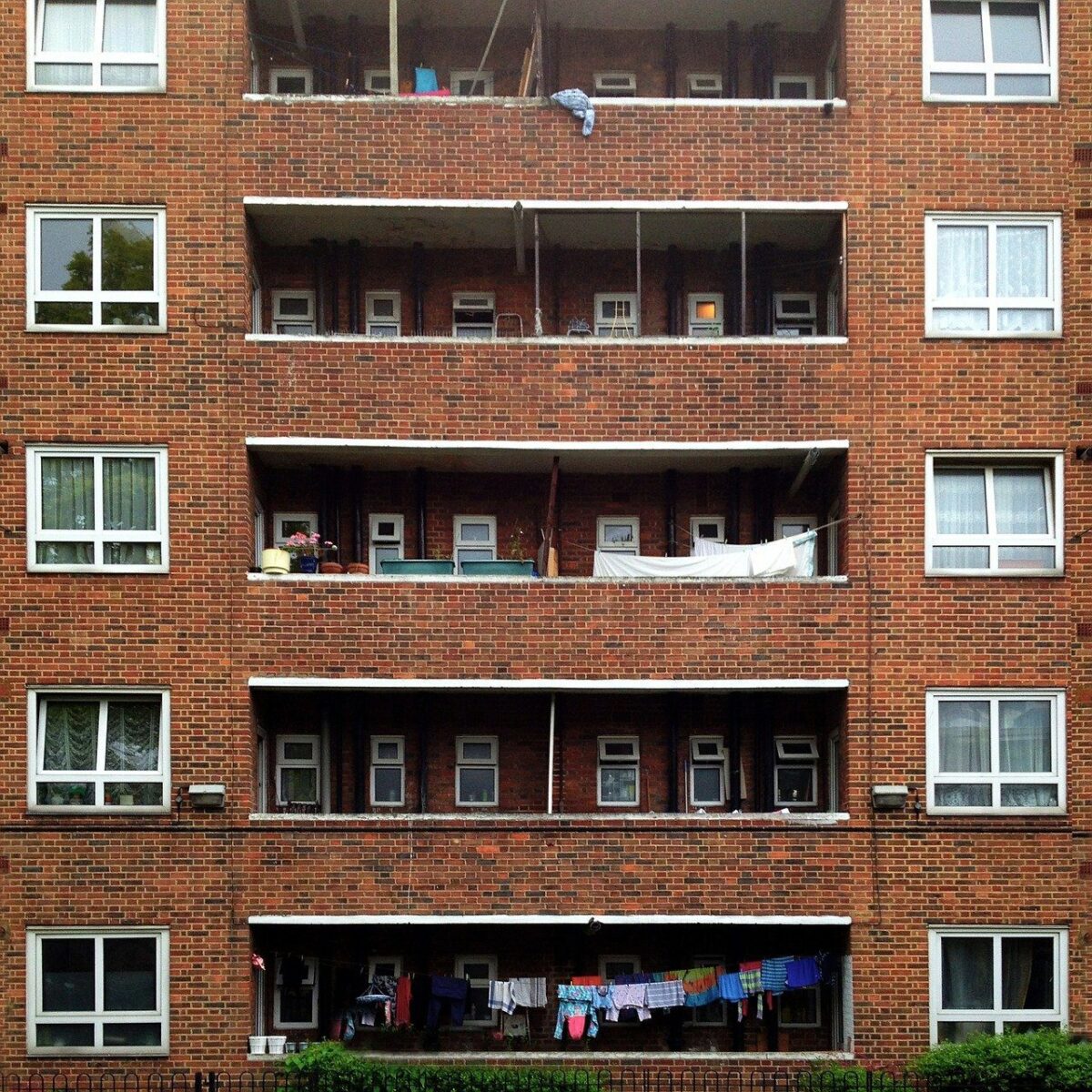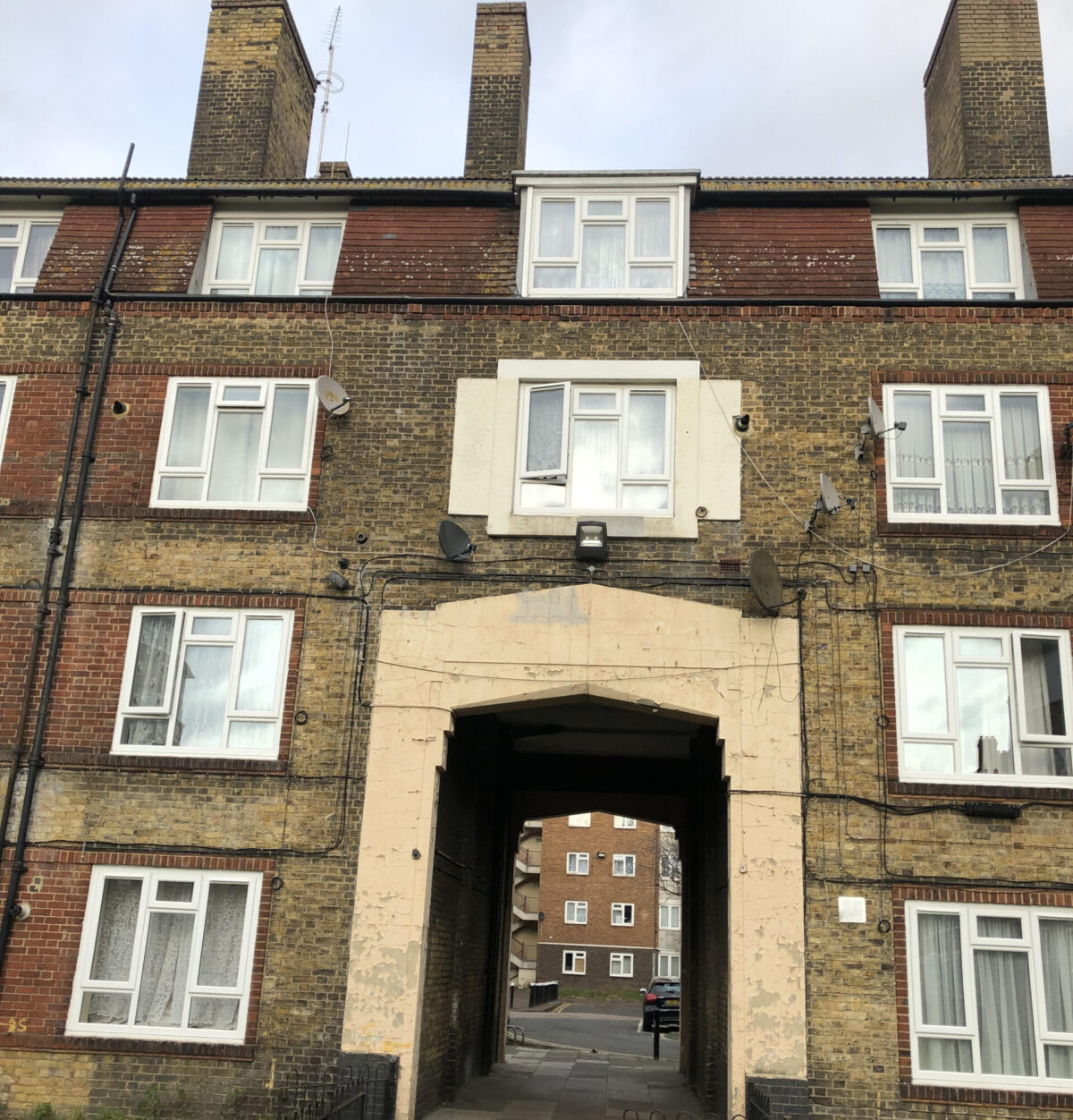The health service is getting the Wes Streeting treatment of more finance and reform. The case for the same approach for social housing is compelling. Health and housing both determine our quality of lives. The two are interrelated, with homelessness and poor-quality housing costing the health service billions.
2024 saw the lowest Labour vote share among social renters since Ipsos began their election studies.
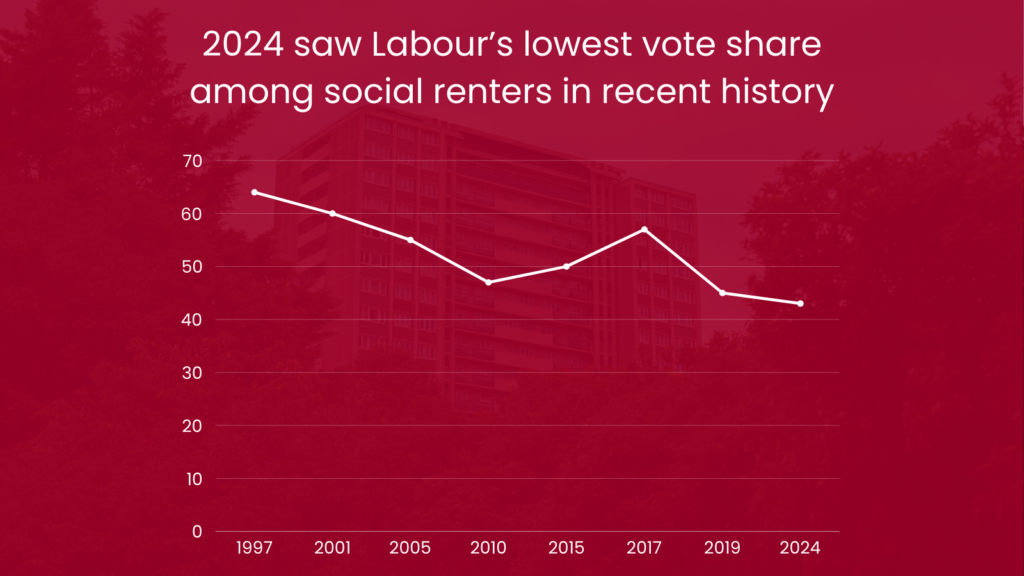
Also worryingly more social housing tenants said that they voted Reform than any other tenure.
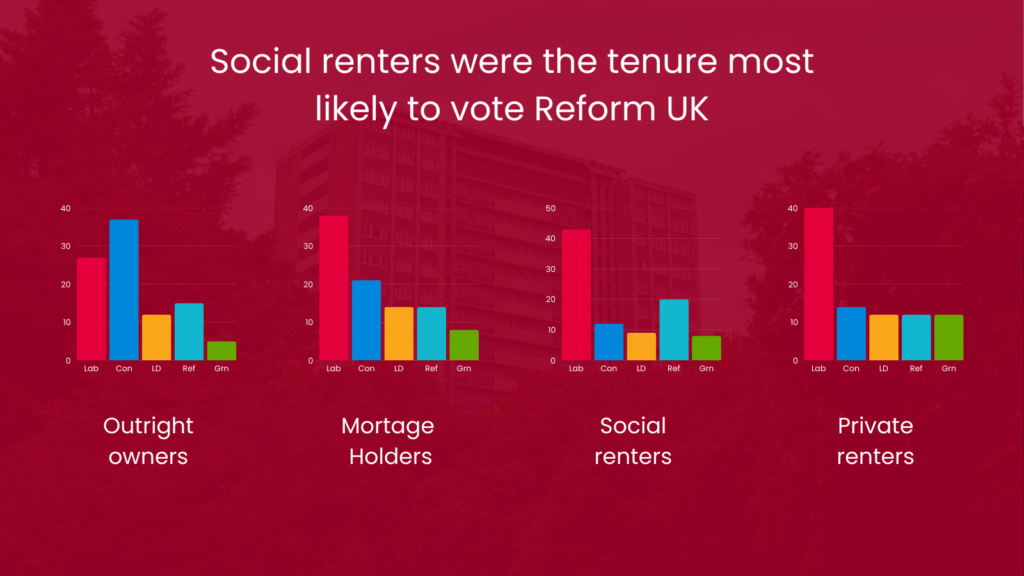
We need to convince tenants that we can make this tangible difference to their lives, by fundamentally changing the power relationship between social tenants and their landlords, drawing upon the insight that Tony Crosland offered about the inequality of decision-making power as far back as 1956 in his book The Future of Socialism.
There are two separate dialogues going on within social housing, one amongst those who manage social housing and another amongst those that live in it.
For councillors and housing professionals the issue is finance. There is simply not the money to make council housing safe and liveable, as highlighted in the Future of Council Housing Report by Toby Lloyd and Rose Grayston and the Labour Housing Group Briefing, Funding Social Housing. The issue for housing associations is that their only way to find the money for safety works is to slash their newbuild programmes, frustrating the Government’s ambition to accelerate the delivery of new affordable homes.
Conversely, at meetings of social tenants, the concern is about the culture of those managing their homes, with tenants feeling disrespected and stigmatised. Angela Rayner referenced this hurt in her 2024 Conference speech saying that she will not allow ‘people like me to be treated like this.’ Those of us responsible for decision-making in social housing think we are doing God’s work, but too often our tenants see us as the enemy.
This anger has intensified post-Grenfell. Pete Apps the author of Show Me the Bodies:How We Let Grenfell Happen has given me permission to share two photographs. The photographs contrast the residents of mixed ethnic origin who died, with the people who were questioned about their culpability who are overwhelmingly white.A representation of structural racism could not be starker.

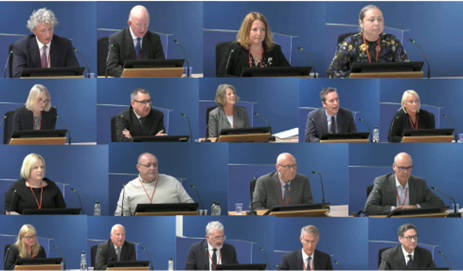
Social housing is in the same place as the health service, most tenant satisfaction surveys report that the majority of users are satisfied, but a significant minority are not, which is not surprising given that both services are chronically underfunded. Very few people who use the health service and social housing question its existence, they just want the outcomes to be better.
What forces are feeding dissatisfaction?
The first is that housing workers are blamed for the chronic underfunding of the service we provide. We are the human face of a service that is not funded to meet the minimal expectation of tenants to live in a secure, safe and liveable home.
The second is stigmatisation. As the number of people living in council housing has reduced, an historic prejudice against council tenants has hardened into stigmatisation. Many people applying for and living in social housing have had substantial experience of disrespect, stigmatisation and racism. Those of us who work in housing need to be sensitive to these life experiences.
In his only reference to council housing Crosland wrote about how the improved standard of council housing that Labour had initiated in 1946 would reduce the prejudice against council housing. Unfortunately as the stock of council housing ages and the effects of chronic underfunding become more apparent the opposite is happening today.
Breaking down power inequality
As early as 1956 Tony Crosland worried about the power dynamic emerging in large public organisations, foreseeing the potential for those without a voice to resent those who make the decisions that impact on their lives. He described power as a “Stratifying Influence”.
Power is a status-confirming attribute, with a strong influence on collective feelings of superiority and inferiority.
Tony Crosland: The Future of Socialism page 128
He identified two forms of decision-making power, the first is the remote strategic power of those at the top of social housing organisations, who few tenants get to talk to:
Such power, being inevitably wielded to some extent in secret and without collecting the voices of those most affected, has a quality of remoteness and detachment which makes it a particularly fertile source of resentment, and hence, since the disparities between controllers and controlled are so wide of deep class consciousness.
Tony Crosland: The Future of Socialism page 129
The second is the face-to-face power of the person the tenant gets to meet who either makes or communicates important decisions. It might seem odd to the hard-pressed, underpaid worker in a homelessness unit or a call centre that they have power, but this is how it is experienced by the person who needs their help.
Another feature of large organisations is a diffusion of responsibility, which means that responsibility is usually shared, making it easier for those responsible to distance themselves from the consequences of their actions. The Grenfell inquiry has highlighted the catastrophic consequences. Those on the ground argued that they were following procedures or instructions made by those higher up; conversely those at the top claimed not to know what was happening and criticised those on the ground for not exercising reasonable judgement.
Whilst Grenfell was a catastrophic event, it is common to hear from social housing tenants frustrated that no-one within the organisation is taking responsibility for sorting their problem out.
This reluctance to take responsibility was evident at the top in the previous Government, with Michael Gove criticising social housing providers, creating the Social Housing Regulator to scrutinise organisational performance, and promoting a more assertive role for the Housing Ombudsman with a focus on complaints resolution, but without providing the necessary resources to improve performance and resolve complaints.
How can transformative change be achieved?
The challenges facing Wes Streeting to transform the NHS are immense. While the NHS is hardly a simple structure, Angela Rayner’s job of persuading, incentivising and cajoling hundreds of different social housing providers to work in the national interest involves an even more complex ecosystem.
Secondly, money is tight. It is more electorally popular to fund the universal health service than needs-based social housing. However, without adequate funding it is impossible to say that the failures of Grenfell “will not happen again”, as Building Safety Minister Alex Norris promised.
There are compelling moral and political arguments for more money. The Blair and Brown Governments found £32bn over 10 years for a Decent Homes programme for council housing. The requirement is now far more pressing.
The power relationship needs to be changed. The majority of tenants are too over-committed to want to be involved in decision-making. However, they want to know that people like them have a voice and that they can go to them when they have a problem. Doing so will affect the way that organisations operate and how decisions are made.
A low-cost and quick win is to create a national body to represent social tenants’ interests, an idea suggested by Crosland to introduce a little democracy into public services. A more long-term task is to create representative bodies at local and regional levels.
A second quick win is to revolutionise the training of everyone who works in social housing, from those on the ground to top decision-makers, as mentioned by Angela Rayner in her conference speech. This must involve the discussion of the structural issues described.
A more controversial proposal is for different housing providers to come together in urban areas to form Neighbourhood Management Boards, with tenant representation. Good housing management is a placed-based neighbourhood activity. Residents are more likely to participate if they can see that they are making a tangible difference to their neighbourhood. The tenants and officers making decisions will be local and accessible. The Right to Manage for council tenants offers an example of how local management could become more formalised, with each local social housing organisation contributing a management and maintenance allowance to the Neighbourhood Management Board.
Crosland understood that cultural change cannot be dictated by national government. Tough decisions will still need to be made, some of them will not be liked by tenants at the sharp end. However, the creation of Neighbourhood Management Boards will create a structure which facilitates positive change.
When Wes Streeting was asked about his political heroes, he replied:
I guess I’m in the modernising tradition of the Labour Party, so I’ve got up on my shelf to remind myself about Crosland’s book on The Future of Socialism which I think is always worth going back to when your party’s in trouble.
Hopefully, we can apply Crosland’s insight before we find ourselves in trouble.
Andy Bates is a member of the National LHG Executive and secretary of the London Branch. He is the retired Executive Manager of a tenant managed organisation (TMO), Leathermarket JMB. He is currently a Board member of Wenlock Barn (TMO). He is a TPAS and Community Led Housing London Associate and a tutor for the Chartered Institute of Housing.

